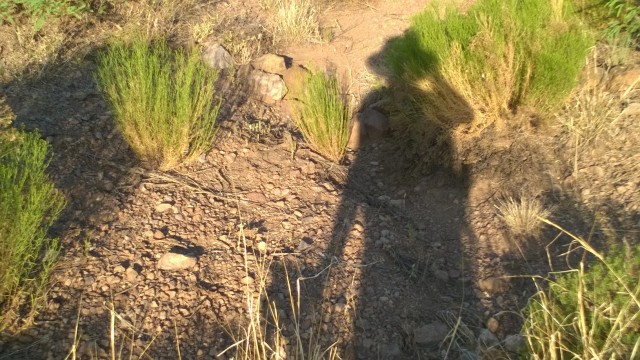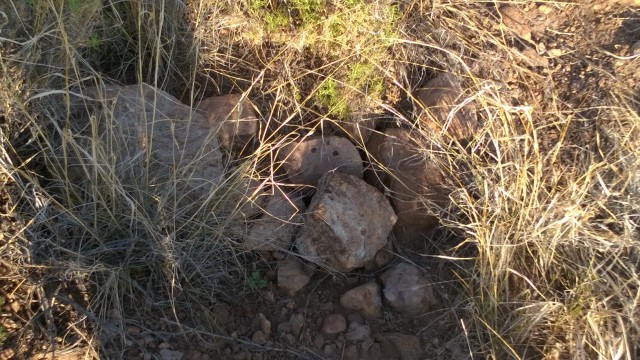- Home
- >
- Preservation Archaeology Blog
- >
- The Durability of an Ancient Technology
Alyssa Kyper, Eastern New Mexico University
(Posted on July 13, 2016)—Today was an excellent day on survey with Evan, Karen, and Jon. We spent the cool, crisp morning showing Karen an array of check dams and terraces on a bench above the Gila River we had surveyed earlier in the season, double-checking the area to make sure we hadn’t missed any cultural material. The extent to which these stone agricultural features covered this land above the river was impressive. Both types of water control features were composed of large stones laid across the down-sloping earth, designed to hinder the progression of water and allow it to seep into the sandy soil. The area contained a combination of modern water control features and ancient pottery, flaked stone, and ground stone tools.

Based on observation of modern and ancient water control features, their locations at points of water runoff on the landscape, and cross-cultural comparisons with similar structures in comparable locations in modern use, we can make inferences about the design, use, and manufacture of archaeological features. In terraces, stones were laid side-by-side along the outer rim of the bench to slow water so that domesticated plants could be grown. In the same fashion, check dams were laid periodically across the width of arroyos to prevent further erosion and perhaps control flooding.
The agricultural features we observed show variability which may be attributed to individualism in manufacture, remodeling, construction in years of relatively more or less water and runoff, and other factors. Although some check dams were manufactured to be one row in width, others were two or three rows wide. In the latter cases, larger stones were placed to form the first row with secondary, smaller stones forming the following rows. These features were composed of metamorphic and igneous stones—the same material composing the eroding bedrock of the bench and surrounding landscape.

Though we can’t confidently date the artifact scatter of plainware sherds, flaked stone, and ground stone, these items were likely left behind in Late Pithouse (A.D. 550–1000) or Classic Mimbres (A.D. 1000–1130) times. Residential architecture from both periods is found nearby, and plainware sherds used throughout this time period were found on the surface.
It was easy for me to get excited about coming across ancient sites on survey. They’re still intact, stones sitting precisely where they had been intentionally placed centuries ago. Experiencing this level of site preservation on survey reminded me I was walking where the individuals who left these artifacts once walked. Forming the end of transect line, on the bench where the land began to slope downwards to end in a sheer cliff, I could picture keeping an eye out for fallen stones from the higher land above. Looking side to side for artifacts and features made me wonder whether the architect had intentionally searched for ideal materials for construction, or just kept an eye out for good stones throughout the day. They have survived in amazing condition, speaking to the durability of the technology of those who made them.
Explore the News
Related to This
-
Project Hands-On Archaeology